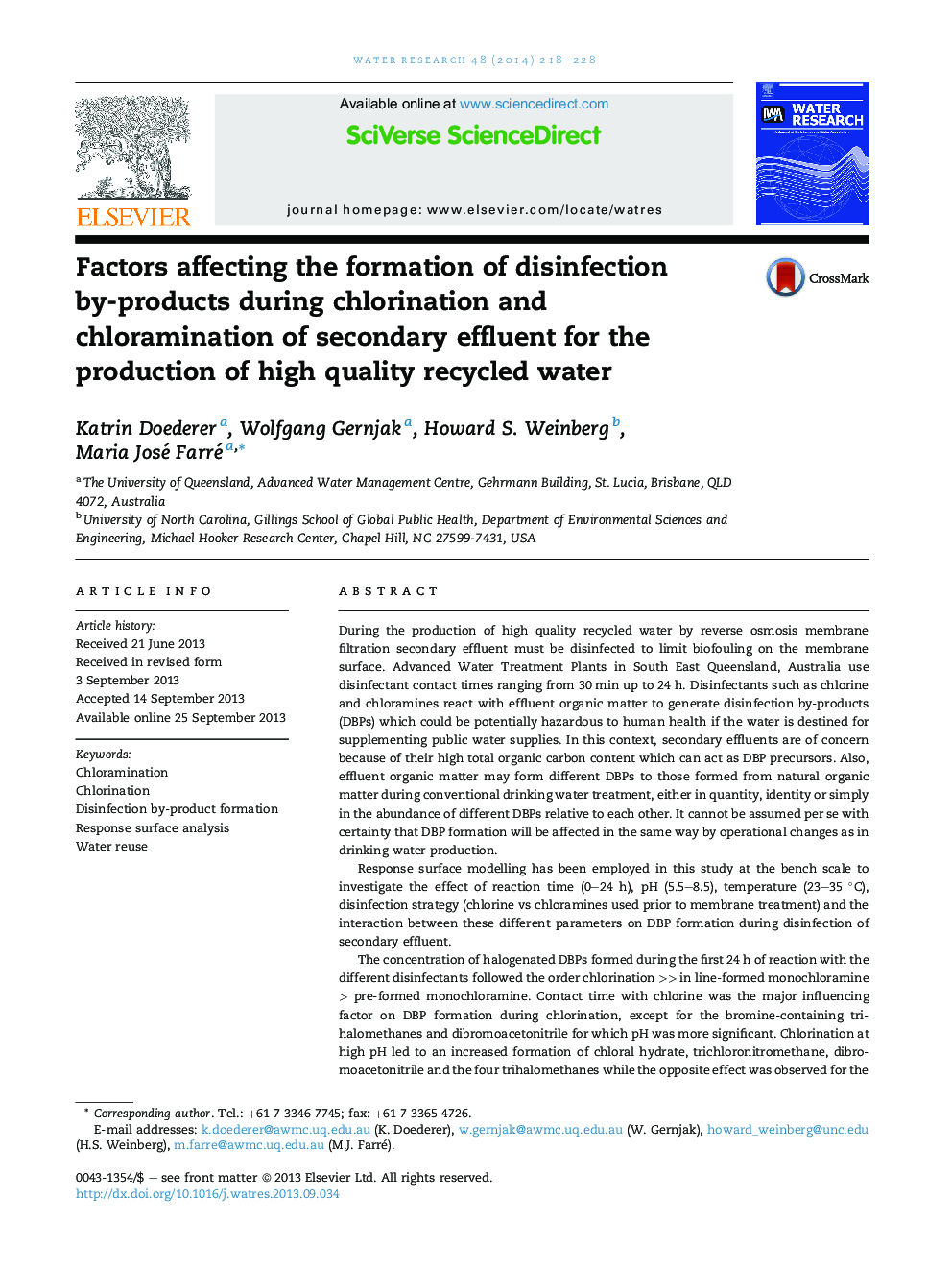| کد مقاله | کد نشریه | سال انتشار | مقاله انگلیسی | نسخه تمام متن |
|---|---|---|---|---|
| 6367162 | 1623120 | 2014 | 11 صفحه PDF | دانلود رایگان |
- Formation of trihalomethanes, haloacetonitriles, haloketones, trichloronitromethane, and chloral hydrate was investigated.
- Significant DBP formation is expected from disinfection of secondary effluent.
- Reaction time and pH are both identified as significant factors during chlorination and chloramination.
- Temperature is the least influencing parameter compared to pH and reaction time.
During the production of high quality recycled water by reverse osmosis membrane filtration secondary effluent must be disinfected to limit biofouling on the membrane surface. Advanced Water Treatment Plants in South East Queensland, Australia use disinfectant contact times ranging from 30 min up to 24 h. Disinfectants such as chlorine and chloramines react with effluent organic matter to generate disinfection by-products (DBPs) which could be potentially hazardous to human health if the water is destined for supplementing public water supplies. In this context, secondary effluents are of concern because of their high total organic carbon content which can act as DBP precursors. Also, effluent organic matter may form different DBPs to those formed from natural organic matter during conventional drinking water treatment, either in quantity, identity or simply in the abundance of different DBPs relative to each other. It cannot be assumed per se with certainty that DBP formation will be affected in the same way by operational changes as in drinking water production.Response surface modelling has been employed in this study at the bench scale to investigate the effect of reaction time (0-24 h), pH (5.5-8.5), temperature (23-35 °C), disinfection strategy (chlorine vs chloramines used prior to membrane treatment) and the interaction between these different parameters on DBP formation during disinfection of secondary effluent.The concentration of halogenated DBPs formed during the first 24 h of reaction with the different disinfectants followed the order chlorination >> in line-formed monochloramine > pre-formed monochloramine. Contact time with chlorine was the major influencing factor on DBP formation during chlorination, except for the bromine-containing trihalomethanes and dibromoacetonitrile for which pH was more significant. Chlorination at high pH led to an increased formation of chloral hydrate, trichloronitromethane, dibromoacetonitrile and the four trihalomethanes while the opposite effect was observed for the other targeted DBPs. Temperature was identified as the least influencing parameter compared to pH and reaction time for all DBPs in all the disinfection strategies, except for the formation of chloral hydrate where pH and temperature had a similar significance and bromoform that was similarly affected by temperature and reaction time. Chloramines employed at pH 8.5 reduced the concentration of all studied DBPs compared to pH 5.5. Furthermore, reaction time was the most significant factor for trichloronitromethane, chloroform, trichloroacetonitrile, dichloroacetonitrile and bromochloroacetonitrile formation while pH was the most influencing factor affecting the formation of the remaining DBPs.
138
Journal: Water Research - Volume 48, 1 January 2014, Pages 218-228
